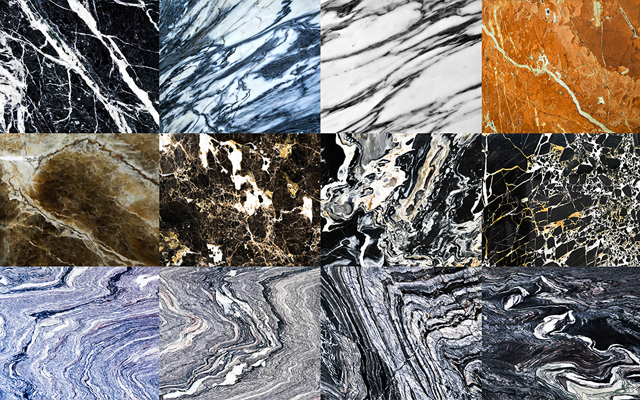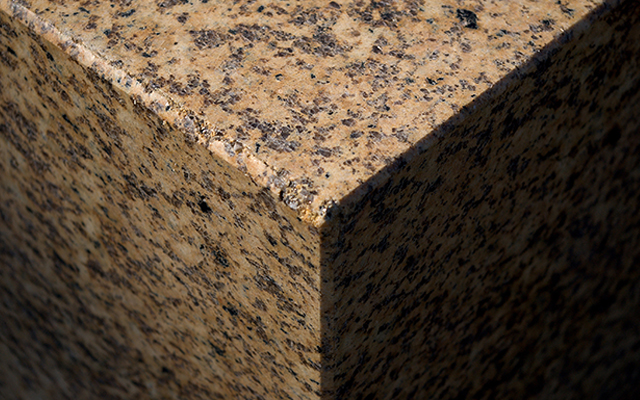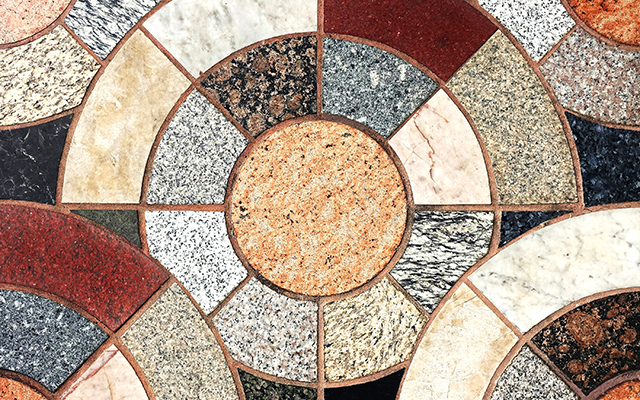Selecting a Natural Stone for Your Project
Today’s consumer has more stone options than ever before. Selecting a naturel stone should depend on what your building application is. Each stone has unique features and properties that when chosen carefully, will provide many years of functional and durable beauty. Here at AGS, we have experience working with all of the following types of stone. As you would expect, some stones work better than others in specific applications. We encourage you to take the time to learn what stone will serve your needs best.
How to Choose the Right Stone
Natural stone is a highly sophisticated material that adds dimension and style to architectural and structural designs. Nothing compares to its beauty and elegance. You have many options when it comes to beautiful, long-lasting natural stones for your home’s interior and exterior: Slate, granite, marble, quartz-based stone, and limestone, just to name a few. Choosing a natural stone for your home is a very personal decision, much like selecting wallpaper or artwork.
While there are literally thousands of natural stones to consider, some are better suited than others to particular uses in and around various projects. Advanced Granite Solutions, along with your architect, designer, and or contractor, can help you explore your options and offer guidance on the right stone for the right project.


Factors to Consider in Selecting a Natural Stone
COLOR
Natural stones are available in a beautiful spectrum of colors. Colors in granite and marble, for instance, can range from soft beiges and pinks and classic black-and-whites to rich corals, greens, and multi-colors. Marble traditionally features swirls and “veins” of colors, while granite has a flecked or pebbled appearance.
Unlike the repetitive sameness of materials produced by machine or assembly line, natural stone’s naturally varied appearance has wonderful character and creates a one-of-a-kind effect everywhere it is used.
FINISH
Natural stone can be polished, honed, flamed, tumbled, brushed, and sand blasted or bush hammered for a distinct appearance:
* A polished finish has a glossy surface that reflects light and emphasizes the color and marking of the stone. This finish is the most widely available finish. It is typically used on countertops, walls, furniture tops, and floor tiles.
* A honed finish is a satin-smooth surface with relatively little light reflection. It is generally preferred for floors, stair treads, thresholds, and other areas where heavy traffic will wear off a polished finish.
* A flamed finish is a rough-textured surface used frequently on granite floor tiles.
* A tumbled finish is an archaic or worn appearance that is arrived at when pieces of marble, limestone or granite are tumbled during fabrication.
* A brushed (Antique or Ancient) finish is an uneven but smooth surface.
* A sand blasted finish is a matte gloss surface that is textured by a pressurized flow of sand and water.
* A bush hammered finish is a textured finish that is developed by pounding the stone. The degree of roughness in the surface texture can be specified.
HARDNESS
Natural stones have varying levels of hardness. The harder the stone, the more it resists abrasion and stands up better to frequent use. Therefore, harder surfaces would have fewer scratches over time, if any at all. If you like a comfortable, lived-in look, you would welcome the signs of everyday usage. Think about your personal preference for stone appearance and select the stone with the appropriate level of hardness. The hardness is determined in part by the mineral composition and by the density of the stone. One measure of a natural stone’s strength is its Measurement of Hardness (MOH) rating; on which 1 is the softest and 10 is the hardest. On the MOH scale, most marbles rate “3” and most granites rate “7.” Using a softer stone simply requires the use of a gentler cleansers and more frequent dusting to prevent scratching.
INTENDED USE
Regardless of the type of natural stone you choose, it’s beautiful, unique, and durable. Natural stone will last your lifetime and more. You should choose what you love. But… You should choose wisely as well. For instance, you might love the elegant look of “Calacatta Gold” marble. But if you have a big family and cook a big meal ever night, you might want to re-consider your options. This beautiful light colored marble will not serve you as well as granite. So, instead; you can pick a light colored granite which is less porous, more durable, scratch and stain resistant and do not require the same maintenance as does marble. This is also true in the case of honed granite, which is more likely to stain and show fingerprints. Because of these properties, honed finish requires more care.
Choices in Natural Stone
There are many different types of natural stones. Each has common uses. Advanced Granite Solutionsshows here several resources to help you understand the differences so you may make the right choice. Please review the resource below.
Natural stones are classified into two general categories by their mineral composition: siliceous stones and calcareous stones.
1- SILICEOUS STONES – are composed of silica or quartz like particles. These stones will have a greater resistance to acids, such as orange juice and carbonated beverages. They will also have a higher resistance to high alkaline detergents. This means they will not etch or show marks and dull spots as easily as calcareous stones. These stones are durable and easy to maintain. They are used on interiors, exteriors, commercial flooring, and are great for countertops. Siliceous stones are granite, quartz-based stone, serpentine, slate and soapstone.
2- CALCAREOUS STONES – are composed mainly of calcium. These stones are more sensitive to the acids found in alcohol, lemons, citrus juices, vinegar and strong alkaline detergents. This means they will etch easier and they aren’t as easy to maintain as siliceous stones. They are more porous (soak up water and liquids) than siliceous stones. They also need to be sealed periodically to reduce the chances of staining and etching.
Generally speaking, more care is required in up-keeping this stone. These stones aren’t usually the best choice for kitchen countertops or areas of frequent use and or abuse. If you do decide to use a softer stone, it simply requires the use of a gentler cleaner, occasional sealing, and more frequent dusting to prevent scratching. Neutral cleansers (ph7) are recommended. Calcareous stones are limestone, marble, onyx and travertine.
GRANITE – Granite is an igneous rock, which means it was once molten and formed as it cooled deep within the earth. Minerals within granite typically appear as small flecks throughout the stone, once creating a “salt and pepper” look. Other types have veining similar to marble. It is the hardest of all building stones with a very dense grain, making it virtually impervious to stain and uniquely applicable for any interior use. It can be highly polished or finished in a variety of other ways. A broad spectrum of color is available.
Most common uses: Interior and exterior wall cladding, interior and exterior paving, residential & commercial counter tops, monuments, curbing, statuary, balance tables, novelty items
MARBLE – Marble has both a scientific and commercial definition. Scientific marble was once limestone that achieved metamorphosis from intense pressures and high temperatures within the earth. This altered its crystalline structure and introduced other minerals that produced the valuable colors and veining. Commercially, any stone capable of taking a polish (with the exception of granite) is known as marble. This includes travertine, onyx, serpentine and limestone.
Most common uses: Interior and exterior wall cladding, interior and exterior paving, fireplace facing and hearth, lavatory tops, residential & commercial counter tops, table tops, statuary, novelty items, many non-architectural uses, such as tooth paste, paint whiting, agricultural lime, etc.
TRAVERTINE – Travertine marble is a variety of limestone formed in pools by the slow precipitation of hot, mineral-rich spring water. The “holes” characteristic of travertine were created when carbon dioxide bubbles were trapped as the stone was being formed. Although the classic travertines are recognizable by their homogenous ecru to dark colors, dark reds are available to dark brown veining.
Most common uses: Interior and exterior wall cladding, interior and exterior paving, statuary, curbing
LIMESTONE – Limestone is widely used as a building stone because it is readily available and easy to work with. It is a sedimentary stone, layered and formed from the skeletons and shells of sea creatures that lived in vast, warm seas millions of years ago. Much domestic limestone is gray to buff in color, while some pastel shades of yellow to pink are available. Imported limestones are available in colors ranging from light beige to dark brown, red and black. When the mineral dolomite is present, it makes the limestone harder and capable of being polished in the same manner as metamorphic marble.
Most common uses: Interior and exterior wall cladding, interior and exterior paving, limited countertop use
QUARTZ-BASED – Quartz-Based stones vary widely in color because of different materials and clays contained within the stone. These stones can be found in varying hues of light gray, yellow, green and red. (The dark, reddish-brown “brownstone” was widely used in building construction in the northeastern United States and Canada in the early 1900’s.) They may be either sedimentary in formation (such as the sandstones, bluestones and brownstones) or metamorphic (as in quartzite that is formed in exceedingly hard layers)
Most common uses: Interior and exterior wall cladding, interior and exterior paving
SLATE – Slate is a fine-grained, metamorphic stone derived from sedimentary rock shale. It is uniform in color, available in shades such as dark to light green, mottled purple, black, gray or dark red. Veined patterns from overseas have also recently been introduced. Unless its surface has been honed smooth, slate can be recognized by its distinct cleft pattern.
Most common uses: Residential and commercial countertops, roofing, interior & exterior wall cladding, interior & exterior paving, fireplace facings & table tops, many non architectural uses
SOAPSTONE – Soapstone is a metamorphosed, easily worked igneous stone characterized by a “soapy” feeling when touched. Colors range from dark gray to bluish or greenish gray. Its heat retention qualities make it an ideal cladding for free-standing coal or wood-fired room heaters. Soapstone is also chemical, stain and weather-resistant, and is useful for sinks and laboratory tops as well as general building purposes.
Most common uses: Chemistry and fire resistant work surfaces, fireplace facings & inner hearths where heat is an issue
ONYX – Onyx marble is a translucent, layered calcitic stone in pastel shades. It is typically formed in caves as stalactites and stalagmites by the slow precipitation of cold, mineral-rich water.
Most common uses: Interior wall covering, very light duty residential flooring, table tops, novelty items. It can also be used exterior in warm environments.

.jpg)
